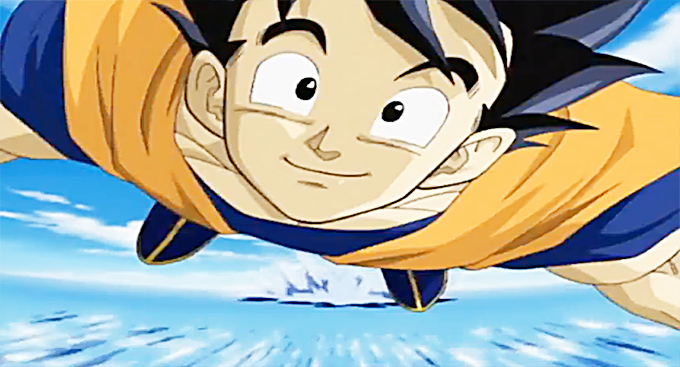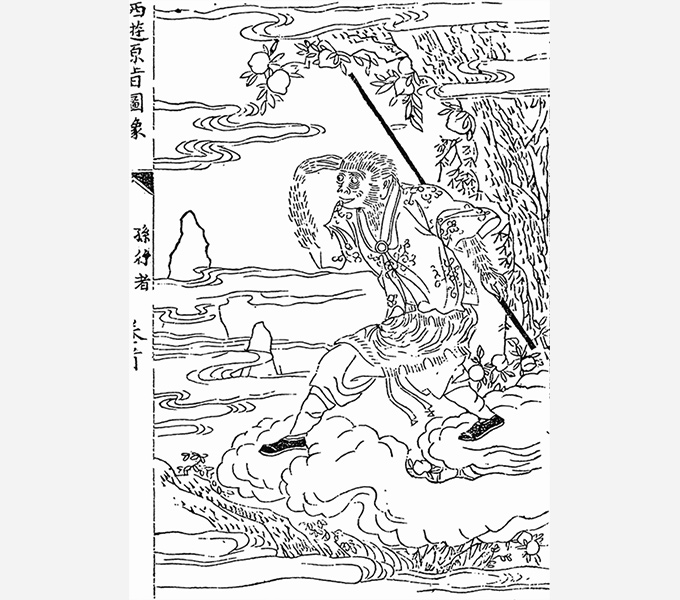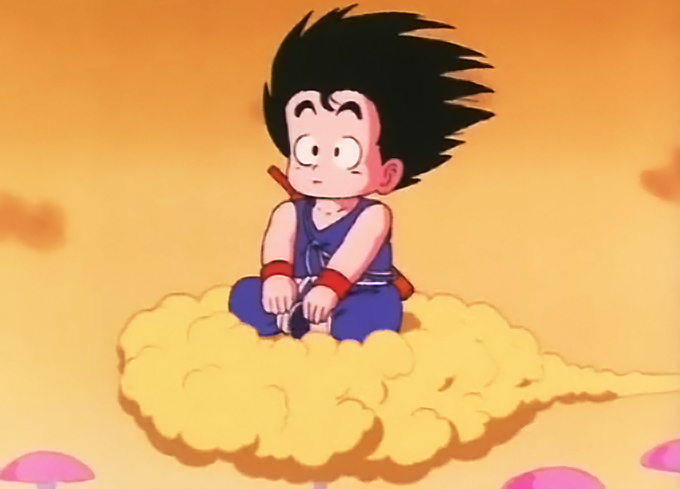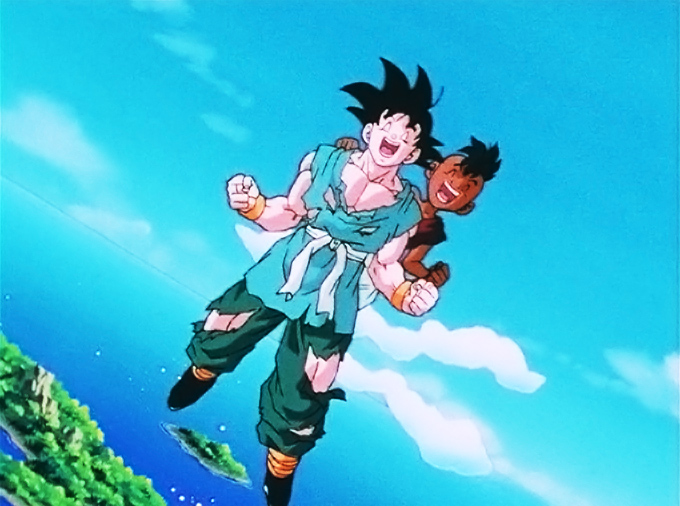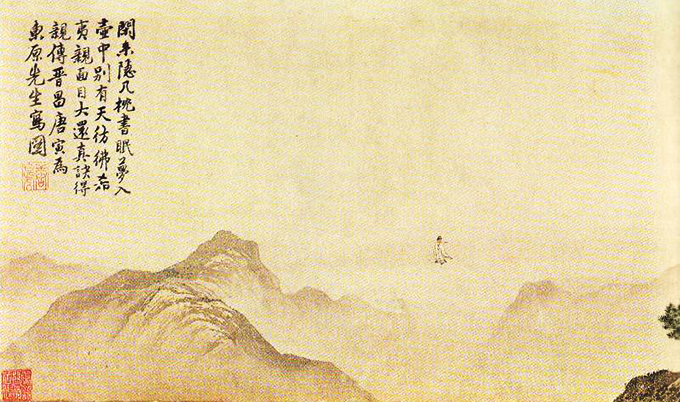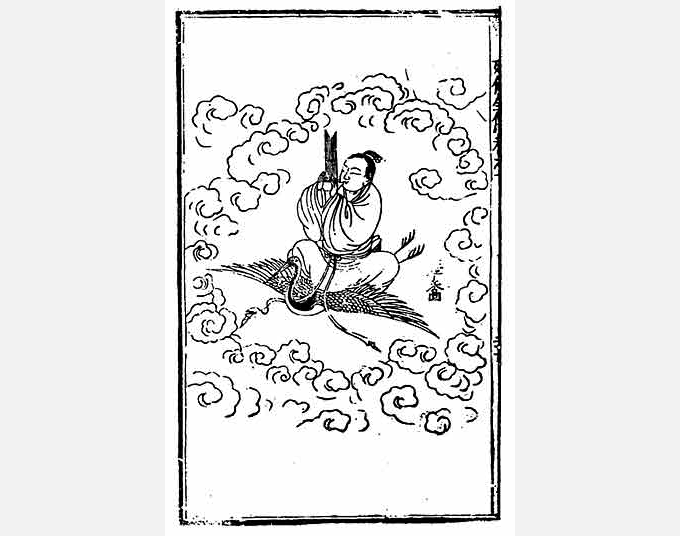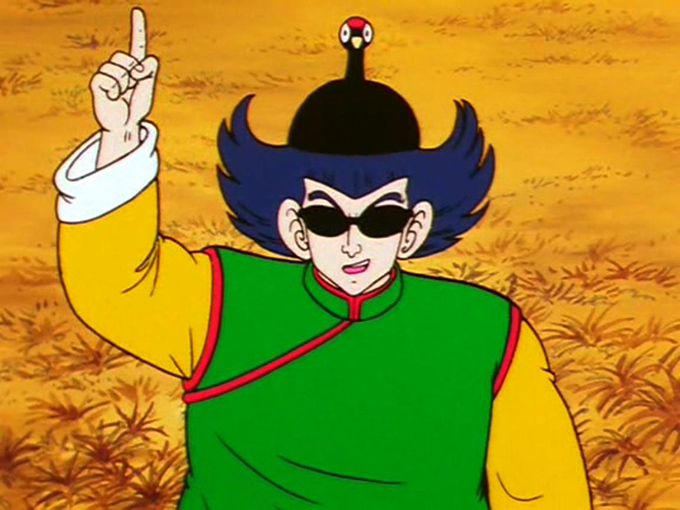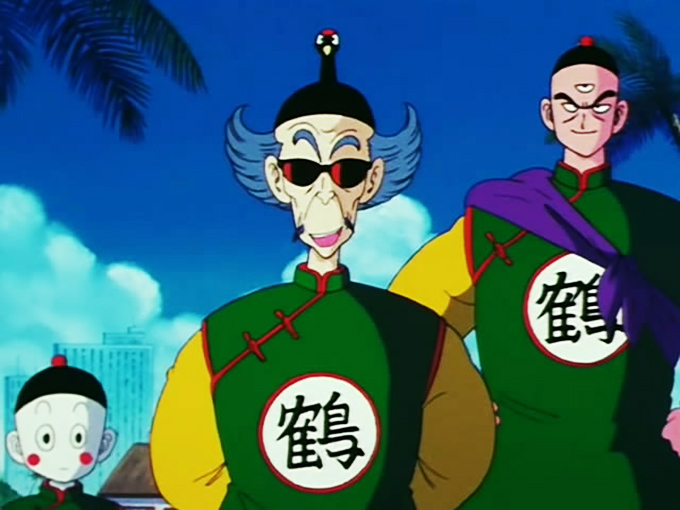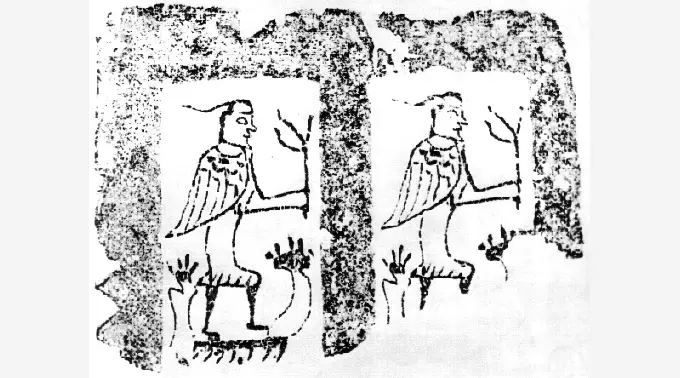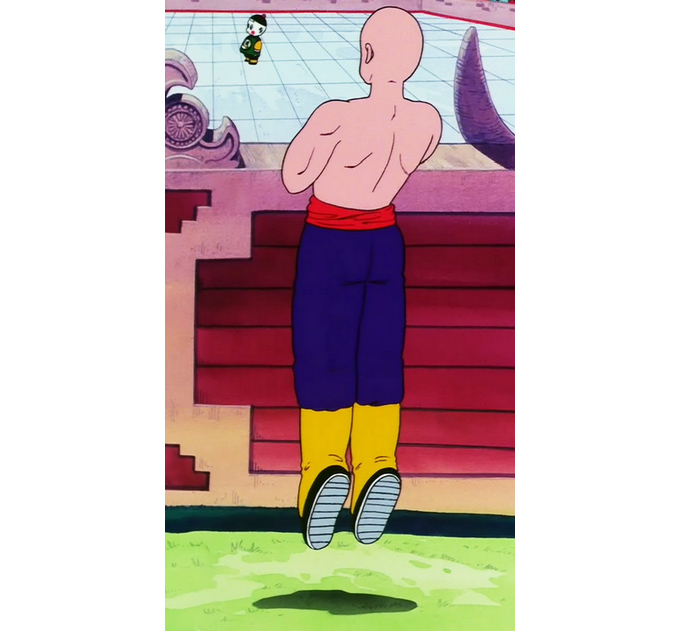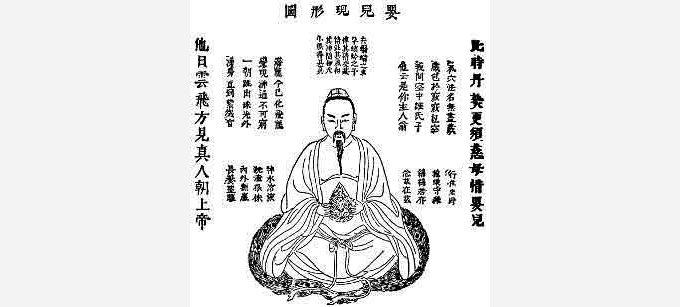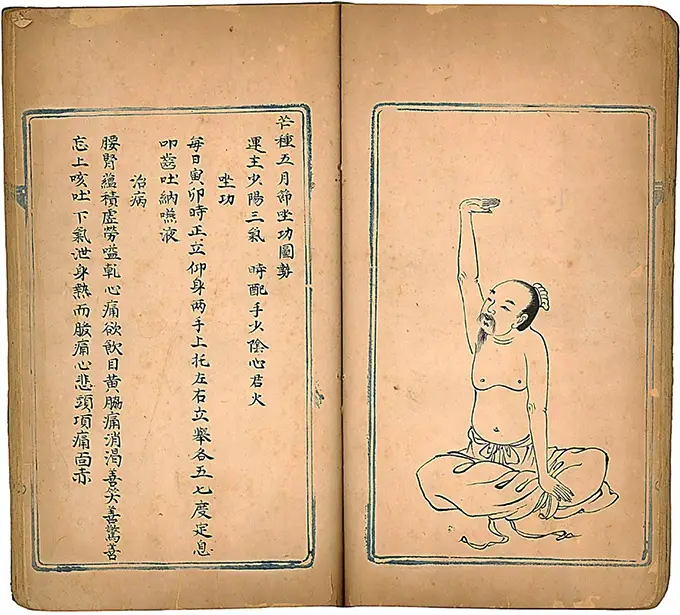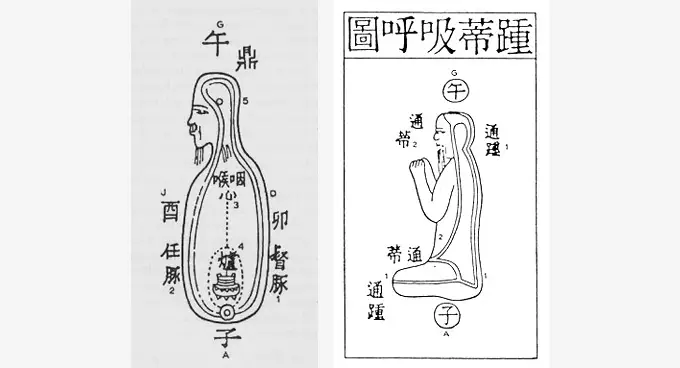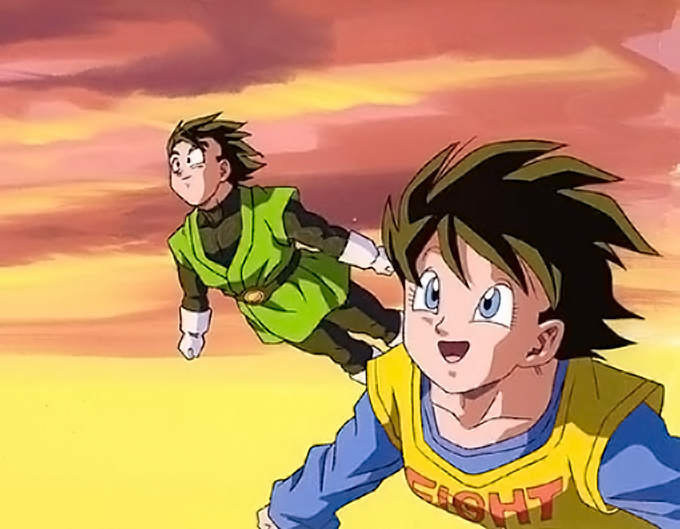Bukujutsu Explained
Have you ever wanted to fly like Goku? How does he do it? In this article you will learn how Goku flies using the technique called bukujutsu.
What is Bukujutsu?
Bukujutsu is a ki technique to lift one’s body into the air and fly. It is derived from ancient Daoist principles and mind-body concepts.
Bukujutsu (Japanese: 舞空術, Chinese: wukongshù, 舞空術) means “cloud dancing technique” or “dancing sky art” and was a name given by the Tsuru-Ryu (Crane Style) practitioners training under Tsuru-Sennin (Crane Hermit).
The Tsuru-Ryu were rivals to the Kame-Ryu (Turtle School) that Goku and Krillin were a part of. The two schools had opposite ideologies on the purpose and practice of the martial arts. Kame Sennin taught his students to be good natured, simple, and defend others, while Tsuru Sennin taught to be cunning, strategic and harm others for personal gain.
While the Kame-Ryu had mastered the use of the kamehameha, the Tsuru-Ryu had mastered the art of bukujutsu.
Therefore, Goku’s ability to fly at supersonic speeds and traverse the world with his own internal power didn’t come naturally. He had to learn the proper technique and work hard on his ki training. And his ki training was all based on Daoist concepts.
Finding Inspiration
The idea of people flying through the air is not an original Akira Toriyama creation.
Toriyama was inspired by high flying Kung Fu movies from Hong Kong and Taiwan. Characters soar through the air with ease, jump across tree tops, flip between bamboo shoots, or leap great distances and attack with outlandish moves.
These films were likewise inspired by Chinese Wuxia novels and the ancient classics, Journey to the West, and Great Water Margin.
For example, in Journey to the West, Sun Wukong the Monkey King, and many other warriors of Heaven employed by the Jade Emperor, are able to fight in mid-air. Sun Wukong wore “cloud hopping shoes” and is often depicted standing on top of his magic somersault cloud which could travel 180,000 li in a single moment. Others are depicted with spinning wheels of fire beneath their feet. Still others have different magical methods.
Sun Wukong’s somersault cloud is the inspiration for Son Goku’s kinto’un (筋斗雲). It was the symbolic illustration of self-propelled flight among the clouds, which was then taken as a stand-alone object.
Just as Toriyama’s masterpiece was inspired by these great works, these great works were inspired by an even older form of culture.
To Dance among the Clouds
The concepts illustrated in Journey to the West came from Buddho-Daoist thought. The magical feats of warriors and sages arose from the idea that human beings have the power to transform their minds and bodies to become something “more” than human.
In Daoist practices they would use Internal Alchemy (Chinese: nèidānshù, 內丹術) and External Alchemy (Chinese: waidānshù, 外丹術) to transform the body, extend one’s life, and eventually attain immortality. These were magical arts that enabled a practitioner to refine the quality of the particles that constitute their bodies.
Along with this physical transformative process came supernormal powers such as levitation and transduction. It was written that Daoists were able to make their bodies so light that they could “walk on clouds” and fly in mid-air.
Or they would ride cranes, dragons, turtles, carp, or other magical animals.
Xiān (仙), translated as “Mountain Man,” “Hermit,” or “Spiritual Ascetic” were people who decided to leave society and dedicate themselves to these transformative arts. The xiān would then teach xiān arts (Chinese: xiānshù, 仙術, Japanese: senjutsu, 仙術) to their disciples.
The term xiān was transliterated in Japan as sennin. Kame Sennin (亀仙人) and Tsuru Sennin (鶴仙人) in Dragon Ball are based on these sennin.
The crane is a Daoist symbol of longevity and also of the supernormal power of flight, so it makes sense that Toriyama would have the Tsuru Sennin (Crane Hermit) be the one that knows how to fly.
The red crown on the crane’s head was metaphsycally linked with the red “cinnabar field” (Chinese: dan tian, 丹田) in the practitioners’ lower abdomen. The red cinnabar color signified Daoist powers. This is why Tenshinhan and Chaozu wear black hats with red dots on the top. It signifies that the practitioners’ energy has ascended to the top of the head and their supernormal powers are unlocked.
During the first millennium AD, the original Chinese character for xiān (僊) reffered to “a man rising up (and ascending).” When two xiān were written together as 僊僊 it meant to “dance lightly, hop or jump around.” Their bodies were so light and their minds so positive and pure that they would rise up and play in the skies.
Going even further back during the Han Dynasty (206 BC to 220 AD), before Daoist culture became well known, the xiān were referred to as yuren (羽人), which meant “Feathered Person,” and described men with feathery wings on their back who could fly on the clouds. It was also a term synonymous with Daoists themselves in later periods.
The wings were illustrated on men just as Goku is illustrated as having wings in Dragon Ball Z’s second anime ending, “We Were Angels.”
http://youtu.be/71HX7vda4H4
It’s no wonder that bukujutsu is a technique that means to go dance among the clouds.
Learning Bukujutsu
It isn’t explicitly stated how Goku learns the bukujutsu, but there are three possible ways he could have.
Goku first witnessed the bukujutsu in the 22nd Tenkaichi Budokai. He saw Tenshinhan waiting for Chaozu’s match to begin, and he was floating in mid-air next to the fighter’s arena. Goku is very sensitive to ki and is quick to enlighten to new techniques, so it’s possible he was able to pick it up simply by watching how it was done. But he doesn’t use it during this tournament, so it’s hard to say.
The second possibility is that Goku learned it while he trained with Mister Popo and Kami during the 3 year preparation for the 23rd Tenkaichi Budokai. Perhaps as part of an advanced training routine, or during his pilgrimage of walking around the earth and performing his musha shugyo (warrior pilgrimage).
Lastly, Goku could have learned it at the last possible moment before he was about to be killed by Piccolo Daimao Jr., saving his life in the process.
It’s not known if he was reserving this technique for that precise do-or-die scenario, or if he just figured it out spontaneously. In either case, Goku uses it during this battle and pretty much every encounter thereafter.
Bukujutsu is what allows him to fly across Snake Way instead of run, and get back in time to save his sons life.
How Bukujutsu is explained in Dragon Ball
http://youtu.be/PGNC-Rgo5Rc
As mentioned, bukujutsu is not explained to the audience through Goku’s actions. But the audience does receive a lesson on ki and how to use it for bukujutsu later in the series, through his son, Gohan, teaching Videl and Goten how to fly.
This moment marks the only time in the entire series where ki is explained in detail, and it’s the one instance where the audience learns how to bring out ones ki.
After Videl learns the basics of ki control, Gohan teaches how to use ki to fly.
http://youtu.be/a_gqF7fRrMA
Seems so easy that even a kid can do it. And this famous scene has inspired millions of people to try to fly by following Gohan’s instructions.
How many of them succeeded? Well, probably not too many. Unfortunately it’s a very rudimentary explanation, even though it does seem like it would work.
Gohan’s lesson doesn’t go into too much detail, and he even struggles to fully explain how ki works. Luckily Videl is already a martial artist and more in tune with her mind and body than most people. Like a practitioner of Zen Buddhism who is forced to learn without being taught, she’s able to intuitively figure it out. Goten already knew how to use ki, so he just applied it in a new way.
But the most important question is never answered.
How does Bukujutsu Work?
Daoist Internal Alchemy teaches that the human body is a small microcosm of the universe. As big as the exterior of our universe seems with planets, solar systems, galaxies, the universe, and multiverse, it is equally large on the inside. Our bodies are comprised of cells, which are particles comprised of molecules, protons, electrons, quarks, neutrino’s, gluon’s, and continuing downward to Higgs Boson, down to the infinitesimally small undiscovered particles beneath these, all controlled by our consciousness.
Practitioners of Internal Alchemy believe that there are other realms besides the one we can see with our physical eyes. There are 9 levels of Heaven, all with living beings in them that possess lightened bodies that can fly, controlled by their minds. They also believe that it is an inherent human ability lost due to the increasing complexity of human society and the human mind.
This is why xiān leave society and try to return to their original, true selves. A pure state in alignment with nature. Only through spiritual cultivation (Japanese: shugyo, 修行, Chinese: xiulian, 修行) can we return to this state, in Oneness with the Dao.
Grandpa Gohan, Kame Sennin, and subsequently Goku who were raised by both, follow this principle of living in accordance with nature and practicing special exercises.
The lightness in the body and ability to fly does not come easily. Training the body is not enough. Improvement of one’s character is the fundamental characteristic of genuine change. Attachments are gradually let go as a practitioner increasingly lives in accordance with the Dao. Their mind changes and their body changes along with it.
When the flow of ki through the body is optimal, the nature of the ki gradually changes and becomes more refined. The more refined the particles are, the smaller, more powerful, brighter, greater in density, and lighter they become. Eventually the body is made so light that it can walk effortlessly for hundreds of miles, climb mountains with ease, jump high and far, and ultimately fly into the skies.
Along with this comes the opening of the Heavenly Circuit, a series of energy channels (meridians) that circulate through and around the body, from the top to bottom, inside to out. When the Heavenly Circuit is opened, the practitioner can use their energy to lift their body into the air, or extend the orbiting channel outside their body and perform telekinesis.
In addition, they are able to sustain themselves for a week with a single bean or grain of rice, ala the senzu.
There is a story in Shénxiān Zhuàn (神仙傳) (“Biographies of Transcendents”), a Daoist classic that speaks of 5 massive mountains that exist in another dimension, held aloft by gigantic turtles amidst the Great Void. Millions of xiān live on these mountains, which are 60,000 miles apart from one another. They frequently travel across mountains and are said to be able to make the trip in one and a half days. They sit in meditation, rise up into the air, and propel forward at super speed.
If they can travel 60,000 miles in 1.5 days (36 hours), then it means they are traveling at an average speed of 1,667 miles per hour. This is 2.19 Mach speed (over twice the speed of sound), which approximates with what you see in Dragon Ball Z.
Because this all sounds incredibly awesome it inspired writers for centuries and millenia to write books like Journey to the West.
It also inspired bandits and martial artist rebels to practice Daoist physical transformative arts in an attempt to become immortal, invincible super humans.
Just like in Dragon Ball.
Taking Flight
Akira Toriyama did not come up with this idea of self-powered flight on his own. He was inspired by Chinese classics, which themselves were inspired by real, living men, believed to be super human.
The idea of transforming the body through the power of the mind is traced directly back to ancient Chinese Daoists and attempts to return to their original, true selves.
By walking the Path and becoming One with the Dao they were able to take flight.
